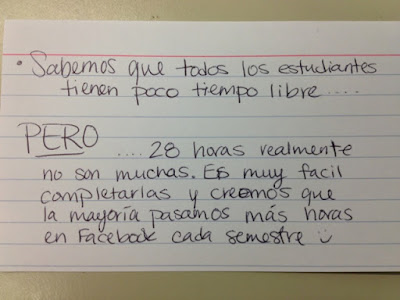Student Reflection

By Michelle Lee Working in Garden Hills Elementary School for the past month and a half has been a rewarding experience. Each week I can see improvement in my student’s math and reading skills, which makes me really happy for her since she is very focused when she works and she is also a great student! She is also very excited to see me every time and gives me a big hug and smile whenever I walk into the room :) She has a friend in class and they are somewhat competitive, which makes it difficult to get them to maintain focus on their own work, but they both are able to complete their assignments and are improving nonetheless. At the school, each tutor helps their student (or two if tutors are ill or not able to attend that day) with math and writing homework. Afterwards the students read out loud for 20 minutes and we help them with their pronunciation and understanding of the plot of the book. The students can choose to read only English, only Spanish, or both English and Spani...









